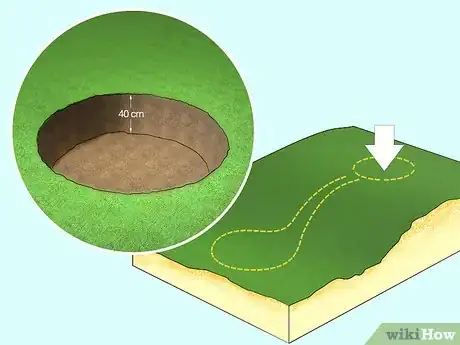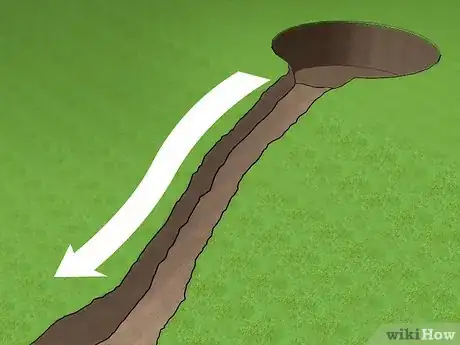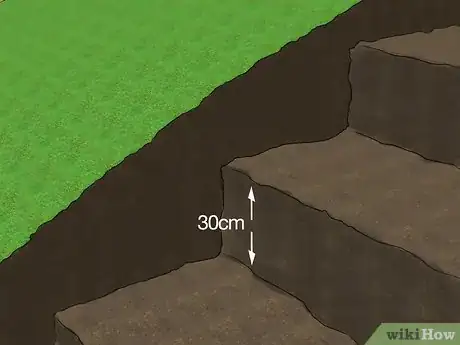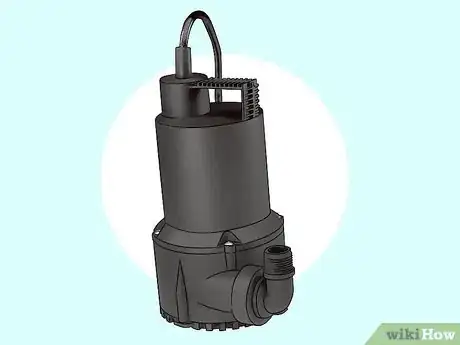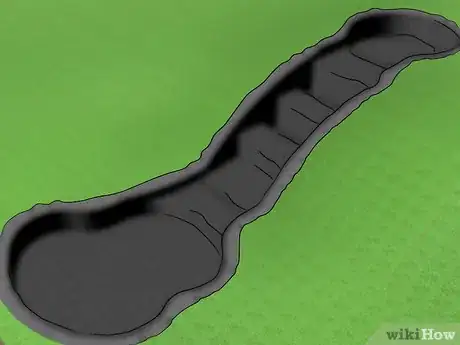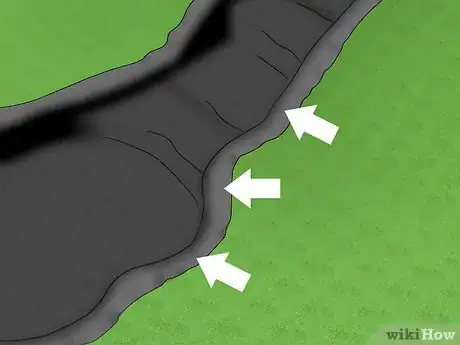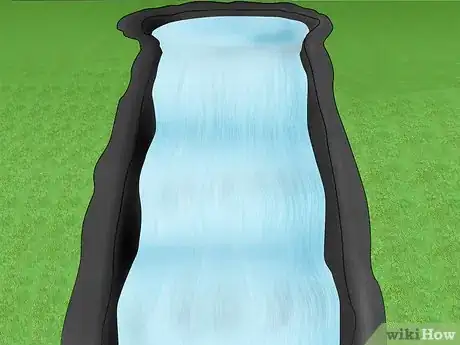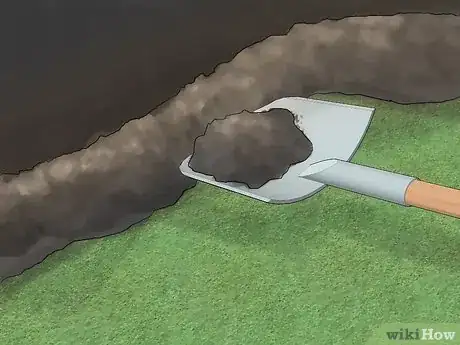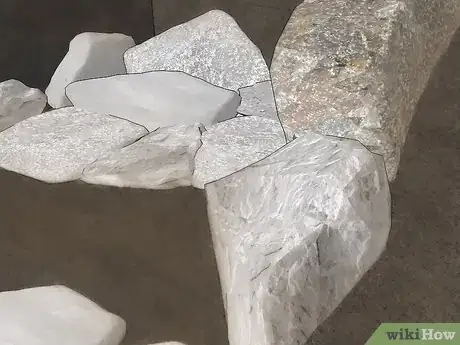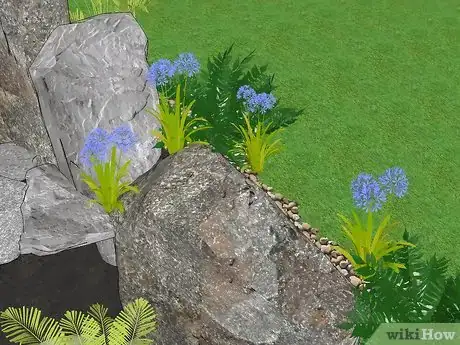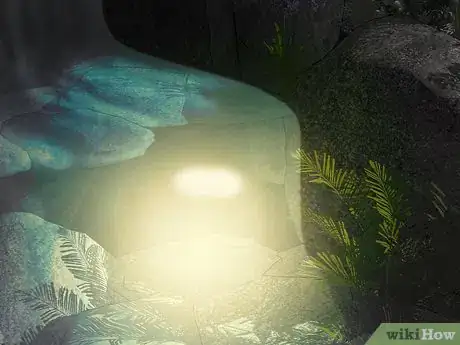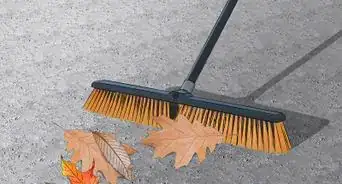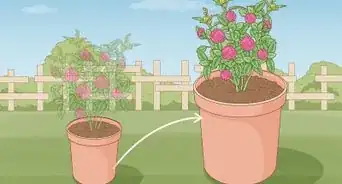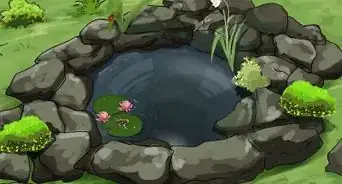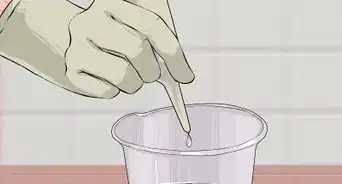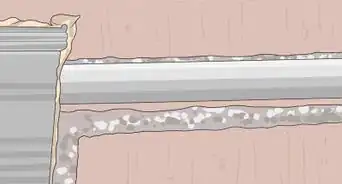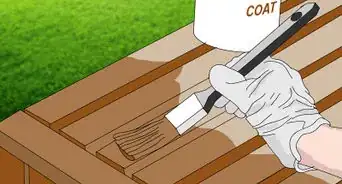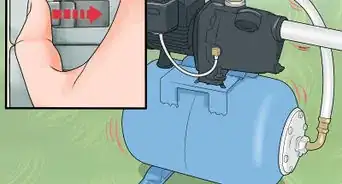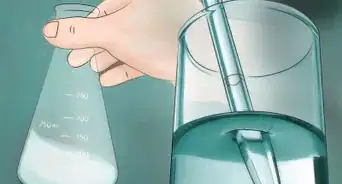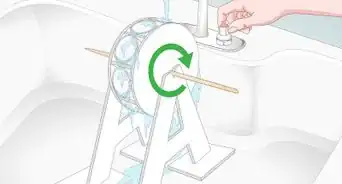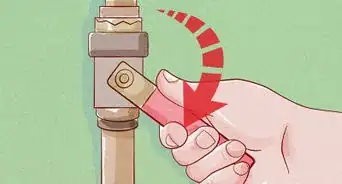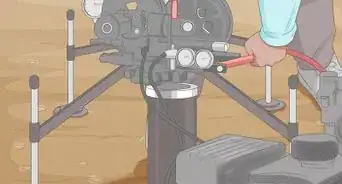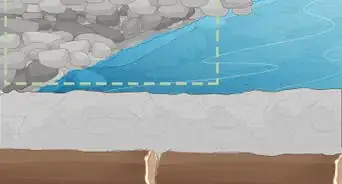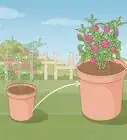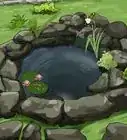wikiHow is a “wiki,” similar to Wikipedia, which means that many of our articles are co-written by multiple authors. To create this article, 12 people, some anonymous, worked to edit and improve it over time.
wikiHow marks an article as reader-approved once it receives enough positive feedback. In this case, 91% of readers who voted found the article helpful, earning it our reader-approved status.
This article has been viewed 243,814 times.
Learn more...
Do you ever look at your garden pond and think something is missing? Well, allow us to give you some ideas to help you transform your pond into something wonderful: all you may be missing is a garden stream!
Steps
Laying the Foundation
-
1Dig a top-pool or small well (40cm deep) at a higher ground level than your pond.
-
2Construct your foundation gradually down from the top-pool into your pond, ensure the foundation is sloped steep enough to allow the water to flow freely.[1]Advertisement
-
3If you want to create a waterfall, build steps into the foundation of your stream, (30cm in height).
-
4At the base of each step, dig a small hole (15cm) to sink your pond liner into thereby creating a small pool where the water can fill up and flow over to the lower step.
-
5You’ll need a strong enough water-pump (we used 2500 Gph) to pump the water up from your pond through a hose (we used 20mm for extra propulsion) into the top-pool which will feed the water down into your stream.
Adding the Pondliner
-
1After you’ve constructed the foundation, run the pond liner up from your pond through the stream foundation, finishing in the top-pool.[2]
- Careful and precise fitting of the pond liner is probably the most important part of the entire process.
-
2It’s best to fit the liner with plenty of overlap on all sides of your foundation.
-
3Before you trim the liner to size be sure to fill your stream with water to see how rapidly your water flows and check for possible holes in the lining.
-
4Run the hose from your pond water pump up to the top-tool, carefully hide the hose under the liner and be sure to check for kinks, again check your flow of water before covering over the hose and liner.
Building the Stream
-
1Once the liner is in place, secure and bed down the edges with soil, be sure to choose soil conducive to plant growth.
-
2If you have added steps to your stream you can build out the steps with garden slate allowing the edge of the slate to overhang creating a waterfall effect, the slate also hides the liner underneath.
-
3Use good size rocks. Garden rocks and stones don’t only add a great feature to your stream they help to weigh down your liner so don’t be afraid to use heavy ones.[3]
-
4You can cover the excess liner and soil with small stones (we used bags of ‘gold light’) and decorate the area with driftwood, logs, slate, granite and beach stones.[4]
Planting for your Stream
-
1Planting is where the real fun begins, border and embellish your water feature with a wide range of aquatic and semi-aquatic plants,[5] we used water grass, water lilies, Japanese maple, ferns, alpine saxifrage.
-
2Add some creative lighting. We all know how glorious it is sit out by your pond on a summer’s day but you can make it equally beautiful by night, all one needs is some creative lighting to illuminate your garden and water feature, simple tea-lights and floating oil burners should do the trick.
-
3Let it grow. While it’s important to maintain and manage your garden pond and stream, it’s just as important to ‘let your garden grow’. Do the hard work and planting early in the season and sit back and enjoy the rewards through the summer.
Community Q&A
Did you know you can get answers researched by wikiHow Staff?
Unlock staff-researched answers by supporting wikiHow
-
QuestionWhat sort of stones can I use for a stream?
 wikiHow Staff EditorThis answer was written by one of our trained team of researchers who validated it for accuracy and comprehensiveness.
wikiHow Staff EditorThis answer was written by one of our trained team of researchers who validated it for accuracy and comprehensiveness.
Staff Answer wikiHow Staff EditorStaff AnswerThe best stone for a homemade stream is local stone but be sure to source it legally and ethically from a local garden center or other suitable provider. You can choose to use one type of stone or mix different types of stone if you prefer. A good combination that replicates nature would be to have split stone along the banks and weathered, large and intact stones in the water. Boulders can be used as feature pieces. Also, try to match stones already in your garden, to help keep the look natural.
wikiHow Staff EditorStaff AnswerThe best stone for a homemade stream is local stone but be sure to source it legally and ethically from a local garden center or other suitable provider. You can choose to use one type of stone or mix different types of stone if you prefer. A good combination that replicates nature would be to have split stone along the banks and weathered, large and intact stones in the water. Boulders can be used as feature pieces. Also, try to match stones already in your garden, to help keep the look natural. -
QuestionWhat is a dammed stream?
 wikiHow Staff EditorThis answer was written by one of our trained team of researchers who validated it for accuracy and comprehensiveness.
wikiHow Staff EditorThis answer was written by one of our trained team of researchers who validated it for accuracy and comprehensiveness.
Staff Answer wikiHow Staff EditorStaff AnswerA dammed stream refers to a series of pooled areas of stream that are linked together by cascades or waterfalls to allow the stream to keep running through each pool and into the next one. The benefit of this arrangement is that if your pump doesn't work properly, then you can be reassured that each pool can operate independently until the pump is mended. The whole effect is very pleasing to the eye but you will need a large garden or yard space to accommodate a dammed stream.
wikiHow Staff EditorStaff AnswerA dammed stream refers to a series of pooled areas of stream that are linked together by cascades or waterfalls to allow the stream to keep running through each pool and into the next one. The benefit of this arrangement is that if your pump doesn't work properly, then you can be reassured that each pool can operate independently until the pump is mended. The whole effect is very pleasing to the eye but you will need a large garden or yard space to accommodate a dammed stream. -
QuestionWhat features can I add to my stream to make it more interesting?
 wikiHow Staff EditorThis answer was written by one of our trained team of researchers who validated it for accuracy and comprehensiveness.
wikiHow Staff EditorThis answer was written by one of our trained team of researchers who validated it for accuracy and comprehensiveness.
Staff Answer wikiHow Staff EditorStaff AnswerConsider plants first, along the edges of the stream, to make it seem more natural. Reeds, grasses and ferns make good choices. If you have the skills and resources, adding a little foot bridge over the stream can be a quaint and pretty touch. Kids will enjoy stepping stones across the little stream, which can be made from large smooth rocks or even pavers, depending on the depth of the stream and its appearance. Some people even add moving features like a water mill, model boats or a fountain. It's really up to your imagination and budget but ask the kids or family what they'd like added too.
wikiHow Staff EditorStaff AnswerConsider plants first, along the edges of the stream, to make it seem more natural. Reeds, grasses and ferns make good choices. If you have the skills and resources, adding a little foot bridge over the stream can be a quaint and pretty touch. Kids will enjoy stepping stones across the little stream, which can be made from large smooth rocks or even pavers, depending on the depth of the stream and its appearance. Some people even add moving features like a water mill, model boats or a fountain. It's really up to your imagination and budget but ask the kids or family what they'd like added too.
Things You'll Need
- Shovel
- Bricks
- PVC pond liner
- Hose pipe
- Water pump
- Rocks / stones
- Plants
References
- ↑ https://www.pondtrademag.com/guide-building-perfect-stream/
- ↑ https://www.familyhandyman.com/landscaping/backyard-waterfalls/build-a-backyard-waterfall-and-stream/
- ↑ https://gardentherapy.ca/how-to-build-a-dry-stream/
- ↑ https://www.pondtrademag.com/guide-building-perfect-stream/
- ↑ https://www.solitudelakemanagement.com/recommended-vegetation-species-to-plant-around-your-lake-or-pond
About This Article
To build a stream, start by digging a top-pool at the top of an incline. Then, dig a 40 centimeter deep channel from the top-pool to your pond at the bottom of the slope. Run a hose from your pond, along the streambed, to the top-pool and attach it to your pump. Test it to make sure the water flows properly before you fill in the stream. Once you’ve tested the hose, line the stream with pond liner, covering the hose and using plenty of overlap on all sides to prevent leaks. Then, cover the liner with soil to make it look more natural. You can also add some rocks and driftwood for more realism. For more tips, including how to place plants in and around your stream, read on!
